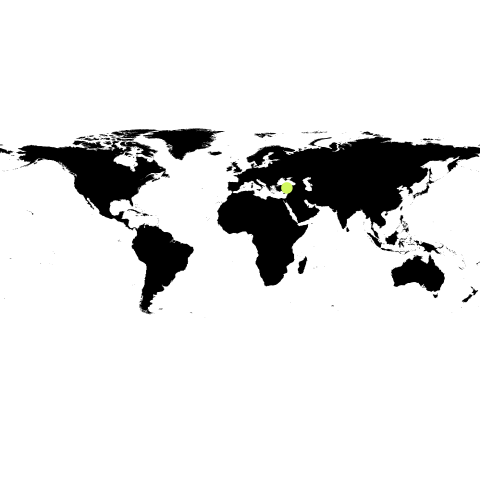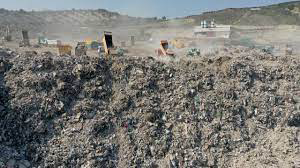Disclaimer:
Please be aware that the content herein has not been peer reviewed. It consists of personal reflections, insights, and learnings of the contributor(s). It may not be exhaustive, nor does it aim to be authoritative knowledge.
Title
Please provide a name for your action learning plan.
PILOT ACTION FOR DEBRIS MONITORING with PARAFOIL DRONE
Challenge statement
Challenge type: If you are working on multiple challenges, please indicate if this is your "big bet" or "exploratory" challenge.
Please note: we ask you to only submit a maximum of 3 challenges - 1x Big Bet, 2x Exploratory. Each challenge must be submitted individually.
EXPLORATORY
Challenge statement: What is your challenge? (Please answer in specific terms: "Our challenge is that...”.)
Following the twin earthquakes that occurred on 6 February 2023, estimations indicate that 116 to 210 million tons of rubble or debris was generated. The debris from collapsed establishments and those to be demolished due to heavy and medium damage possesses a great threat to environment and human health. The remote sensed data could be gathered with various solutions, including satellite imagery, fixed wing unmanned aerial vehicles or quadrotor drones. Each of these applications has advantages and disadvantages. The satellite imagery covers broad areas and has no operational carbon footprint and is sustainable. On the other hand, they can provide low resolution imagery with high deviations, and it is impossible to obtain 3D calculations. The fixed wing unmanned aerial vehicles can provide broad area cover just as satellite imagery, however the operational costs are extremely high and due to their high minimum speed, it is relatively difficult to gather detailed imagery at smaller scales.
Background: What is the history of your challenge? What is causing or driving it? Who is involved? How does the current situation look like? What undesired effects does it produce?
The management of the debris is made by the Ministry of Environment, Urbanization and Climate Change in the region. However, apart from the sites that were determined by the Ministry, dumping is being made on either solid waste disposal areas managed by the local authorities or unregistered fields. In both cases, the exact volume of debris, its composition and absorption capacity of the land is not known precisely.
Quantitative evidence: What (official) data sources do you have on this challenge that better exemplifies the importance and urgency of this frontier challenge? You can add text, a link, or a picture.
https://www.mdpi.com/2076-3417/13/15/8823
Qualitative evidence: What weak signals have you recently spotted that characterizes its urgency? Please provide qualitative information that better exemplifies the importance and urgency of this frontier challenge. You can add text, a link, or a picture.
Value proposition: What added value or unique value proposition is your Accelerator Lab bringing to solving this challenge? Why is it your Lab that needs to work on this challenge and not other actors within UNDP, other stakeholders in the country respectively? Why is it worth investing resources to this challenge?
After AccLab found the Innovita Technology will be the most effective way to track, the technology and the study was explained to the municipality. They are very excited to try this technology and if this pilot succeeds the municipality can own similar kind of drone and make their own tracking with trained staff or they can procure surveillance and analysis services from service provider.
Given these challenges and capabilities of remote sensing tools, a recently developing technology, parafoil unmanned aerial vehicles are considered to provide more efficient solutions in debris management. These systems have broad area cover, very low carbon emissions and noise pollution, provide high imaging times and enable sustaining and longer flights as they benefit from air currents during flight.
As determined in market research, there are only two product and service producers globally for parafoil UAVs: Animal Dynamics in the UK and Innovita Technology in Türkiye. Among these companies, only Innovita Technology provides imagery and image-based analyses and has no defense industry solution, whereas Animal Dynamics has been selected to participate in a challenge of the UK Royal Navy.
The product, namely Junno, is equipped with state-of-the-art autonomous flight technology, allowing it to navigate and execute flight plans with minimal human intervention. This autonomy makes it suitable for a wide range of missions, from surveillance to data collection, where precision and reliability are paramount. Junno can also autonomously execute pre-defined missions with precision. Whether it’s conducting a wide-area scan, performing a surveillance mission, or gathering data in remote areas.
Short “tweet” summary: We would like to tweet what you are working on, can you summarize your challenge in a maximum of 280 characters?
In the aftermath of the devastating earthquakes that hit Turkiye in February 2023, AccLab Turkiye is working on a new technology of parafoil drone to track debris load in Kahramanmaras to contribute to the debris management efforts of the Kahramanmaras Metropolitan Municipality.
Partners
Who are your top 5 partners for this challenge? Please submit from MOST to LEAST important and state Name, Sector and a brief description of the (intended) collaboration.
Please state the name of the partner:
Kahramanmaras Metropolitan Municipality (KMM) - government - responsible from debris management
What sector does our partner belong to?
Government (&related)
Please provide a brief description of the collaboration.
KMM will provide the location of the dump site for debris and facilitating the legal permissions for a drone flight. After we received the reports of the debris change and the capacity of the area, they will be selecting new places for dump sites.
Is this a new and unusual partner for UNDP?
No
Who are your top 5 partners for this challenge? Please submit from MOST to LEAST important and state Name, Sector and a brief description of the (intended) collaboration.
Please state the name of the partner:
INNOVITA company - the founders of the parafoil drone and also making the surveillance and reporting the data
What sector does our partner belong to?
Private Sector
Please provide a brief description of the collaboration.
Innovita Technology provides imagery and image-based analyses for the debris dump site selected by KMM.
Is this a new and unusual partner for UNDP?
Yes
Learning questions
Learning question: What is your learning question for this challenge? What do you need to know or understand to work on your challenge statement?
If we can calculate the debris holding capacity of the dump site and analyze the change in the volume of debris between 2 surveillances, KMM will use this data to direct select new dump sites so that the land deterioration will decrease.
To what stage(s) in the learning cycle does your learning question relate?
Test
Usage of methods: Relating to your choice above, how will you use your methods & tools for this learning question? What value do these add in answering your learning question?
The Contractor shall conduct 2 aerial surveillances for a 10 square kilometers area in Kahramanmaraş. The aerial surveillance shall be conducted with a parafoil unmanned aerial vehicle and a ground station meeting. 2 aerial surveillances will be conducted with approximately 1 month-period to gather data on comparison analyses.
Existing data gaps: Relating to your choice above, what existing gaps in data or information do these new sources of data addressing? What value do these add in answering your learning question?
The satellite imagery covers broad areas and has no operational carbon footprint and is sustainable. On the other hand, they can provide low resolution imagery with high deviations, and it is impossible to obtain 3D calculations. The fixed wing unmanned aerial vehicles can provide broad area cover just as satellite imagery, however the operational costs are extremely high and due to their high minimum speed, it is relatively difficult to gather detailed imagery at smaller scales. Quadrotor drones can provide high resolution and 3D imaging; however, their area cover is limited, and they have moderate carbon emission with considerable noise pollution. The payload capacity of average quadrotors is limited; thus, they need battery change in short time periods.
Closing
Early leads to grow: Think about the possible grow phase for this challenge - who might benefit from your work on this challenge or who might be the champions in your country that you should inform or collaborate with early on to help you grow this challenge?
· Implementing a holistic project for environment-friendly debris management project,
· Enabling opportunities for UNDP Türkiye in debris management within EQ Region,
· Establishing a holistic Debris Management System for the local authorities in the EQ Region,
· Developing geographic information system of UNDP Türkiye in terms of data and capacity,
· Tracking of impacts of debris dumping on the wildlife,
· Feasibility studies for carrying mobile base stations for similar emergencies to ensure connectedness,
· Feasibility studies for agricultural monitoring and remote sensing in the earthquake region,
· Demo studies for on-site flights for determining damages in power transmission lines.
END OF ACTION LEARNING PLAN: Thank you! The form saves automatically and your submission has been recorded. You may now exit this window.


 11Sustainable cities and communities
11Sustainable cities and communities 15Life on land
15Life on land
Comments
Log in to add a comment or reply.